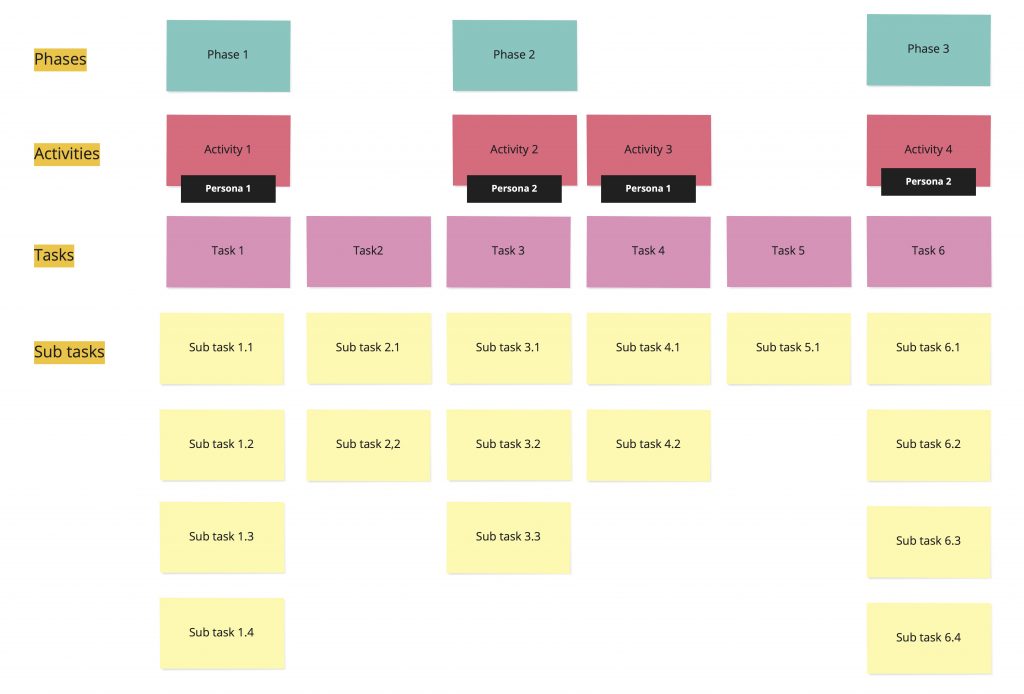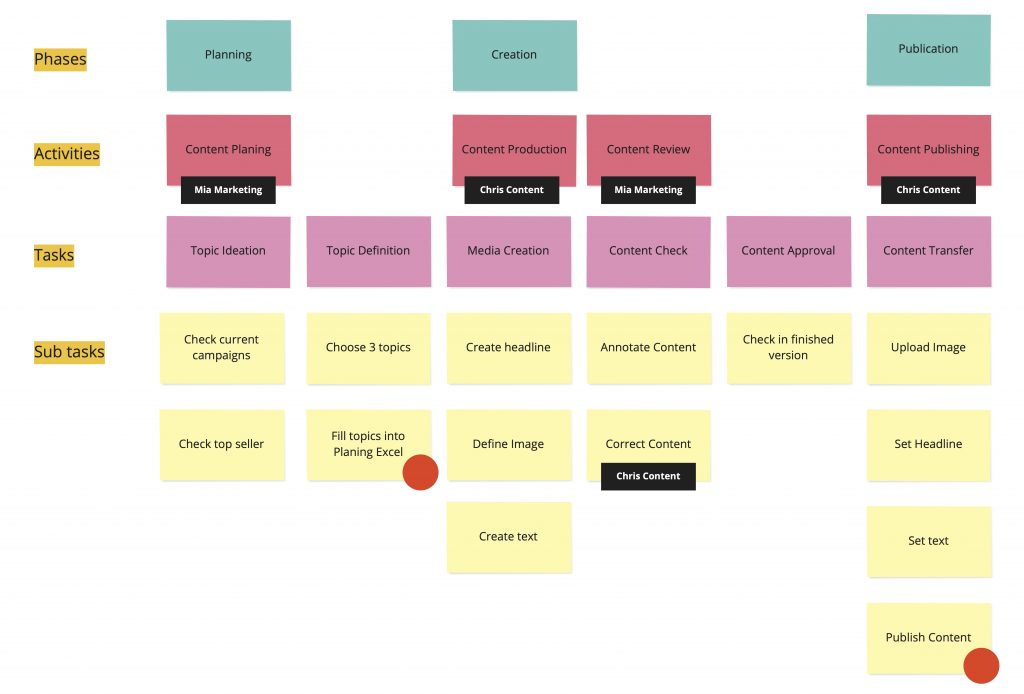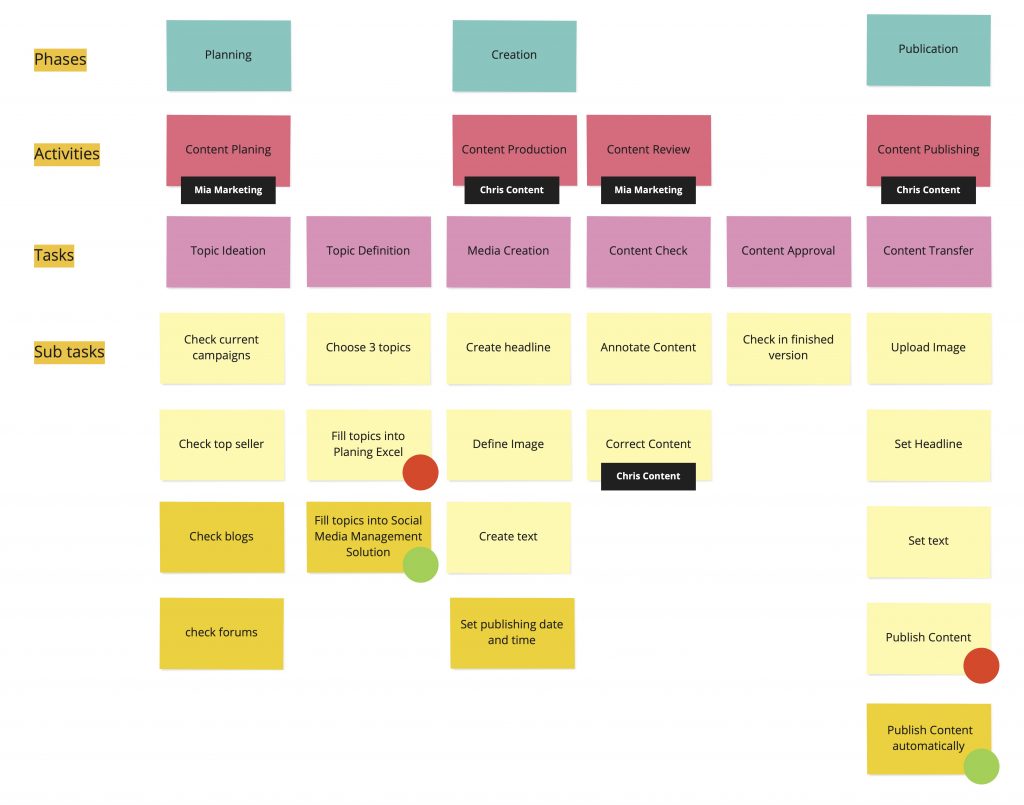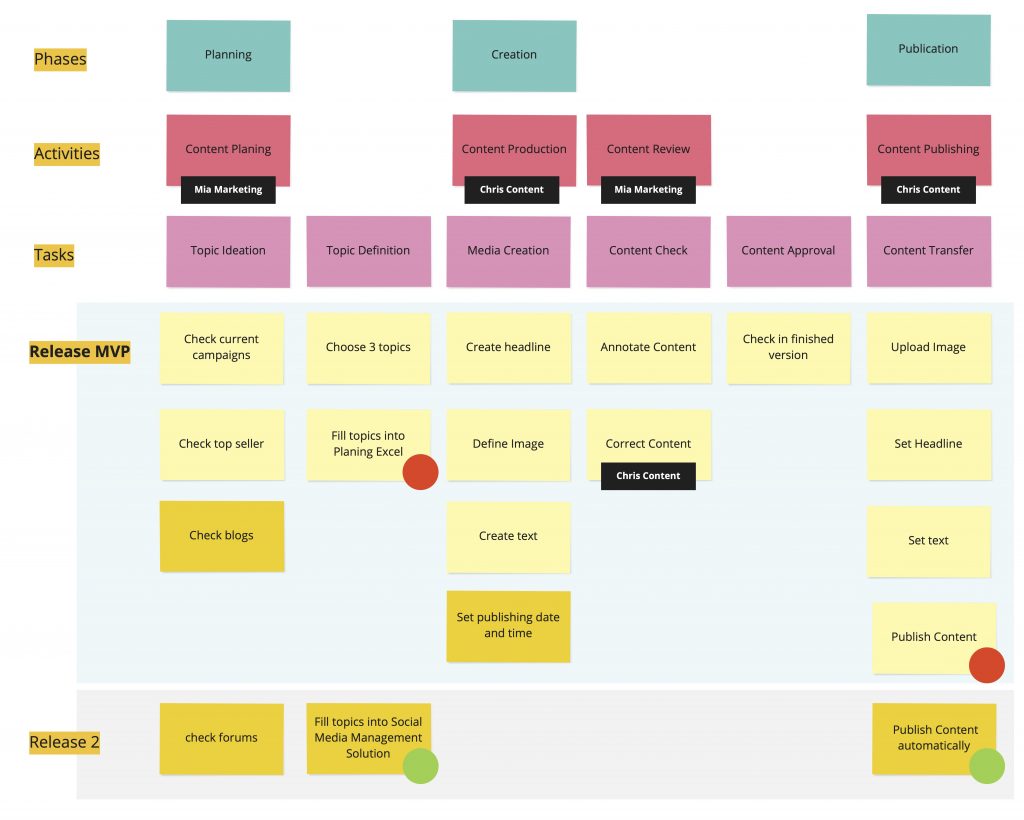Regardless of whether you want to create a strategy, a new product, a solution or a concept in which external partners, customers or internal stakeholders are involved, you will find yourself in workshops. If you are responsible for moderating the workshop, it is invaluable to have a methodology in place that will guide you and your group to the results you want. User story mapping is a method that has really paid off in my projects.
Workshop vs. Meeting
Most of the time, people confuse meetings and workshops. Even though a meeting has defined goals and an agenda, it is still a meeting, not a workshop. Even if you have all of your questions prepared, you probably have a good interview prepared, but it is still not a workshop.
You are in a workshop when you and a small group work intensively on a mostly practice-oriented topic with a limited, compact period of time. In such a situation, you need to compile various pieces of information from different people and shape it into a result that every workshop participant can understand. For this very challenging task you need a cooperative and moderated way of working.
The secret of a perfect workshop
As you think back to your last workshop, whether you were a moderator or a participant, ask yourself what exactly led to a bad, ordinary, or great workshop?
In my case it is always the level of attention and active participation of all participants in the workshop. The best way to get attention and collaboration is to fully engage all workshop participants by assigning them tasks and working with visual tools that anyone can follow and understand.
User story mapping is a tool that fully meets these requirements and can make a workshop a great experience for the moderator and participants.
User story mapping
User story mapping is a technique and is normally used in an agile project approach and can be used as a framework or template like “Scrum”.
The goal of user story mapping is to create a story instead of drawing or modeling a technical process. A story is something anyone can understand, and if you get it right, usually all of the participants have a very clear idea of what we are trying to create.
I always build my story map in 4 levels in order to get from a rough level to a detailed level. These levels are 1st phases, 2nd activities, 3rd tasks, and 4th sub-tasks.

User Story Mapping – Theme
I always start from left to right as you read a sentence, and from the top level down to the level of detail. Depending on the size of the group, I usually build sub-groups and have them write the post-its and present it to the workshop audience. This way you get everyone’s full participation and you can be sure that by the end of the workshop it will be the process, the concept, the strategy or whatever you are working on.
Finally, we assign a persona to the activities or tasks, sometimes just a name. So we can really tell a story like “Mia Marketing” is planning a campaign. Mia is checking the top selling products. Then Mia …”.
Always start with the status quo
Before starting anything new, it is always important to know where you stand. Even if you are striving for a revolutionary change, it helps to understand what is currently working and what is not.
User story mapping is also a perfect approach to get a clear and detailed picture of the status quo. In my workshops, I usually start by creating the story map for the status quo.
Once we have achieved this, we will mark the activities, tasks or details that we would like to change or adapt.

User story mapping – Status quo
Define the target state
For all marked items we try to find different options or completely new ways. Therefor we beginn to scribble, create wireframes or try to find meaningful examples to define a clear picture how we want to tackle the defined issues.
Finally we want to replace our marked post-its with new post-its that define our target state of solution, concept or strategy.

User story mapping – Target state
Cluster feasible packages
To complete the picture, the next step is to prioritize the post-its by clustering appropriate packages. Most of the time, when you are working on a product, you create a initial showable package called a Minimum Viable Product (MVP). But as i mentioned before User Story Mapping is a framework so that you can prioritize in your own way. As an example, you can group by estimated effort, expected impact or similarity .

User story mapping – Feasible packages
Learn more about User story mapping
If you would like to learn more about User story mapping I recommend watching the Besteller Udemy course by Thorsten Diekhof. It is quick but comprehensive training on the topic and it was the perfect start for me to dive into this technique.
Of course you can also ask me by contacting me directly or just leave a comment below.







Leave a Reply